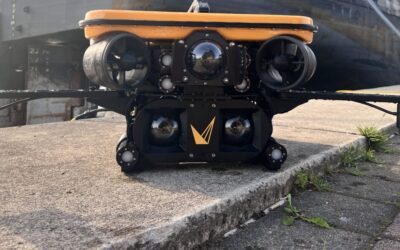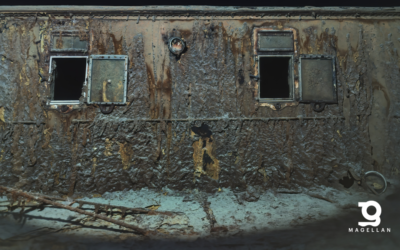At Voyis, we understand the challenges that come with conducting efficient and effective ROV inspections in the subsea industry. That is why we have developed the Discovery Vision Systems – revolutionary cameras that combines ROV piloting and 3D inspection capabilities in one high-quality system, available in two configurations: Discovery and Discovery Stereo.
In today’s blog, we will dive into the challenges of offering both ROV piloting and 3D inspection capabilities in one system, as well as the solutions we have developed to overcome these challenges.
The Discovery Vision Solution
When it comes to underwater inspections, low latency and high-quality datasets are critical. However, achieving both simultaneously is no easy feat, especially when dealing with interference from other sensors and sources. Discovery Vision Systems faced these challenges head-on, but with a few hurdles to overcome.
Piloting cameras prioritize low latency video, at the expense of image data required for 3D model generation. Conversely, inspection cameras prioritize image data at the expense of piloting effectiveness, with a higher latency and a limited field of view. The Discovery is a vision platform without compromise, leveraging edge computing to capture both low latency enhanced piloting video and the high-quality stills image data needed for 3D machine vision applications.
ROV Piloting
The main challenge for remotely operated vehicle (ROV) pilots is maintaining situational awareness while performing their missions, which includes monitoring their surroundings and avoiding collisions. Pilots rely on cameras to observe their surroundings, but the range of their awareness is typically limited to 3 meters due to poor camera sensitivity and limited lighting power. Small ROVs typically rely on only one piloting camera, making it critical that it provides a sufficiently wide field of view (FOV) for piloting awareness. However, as FOV increases, camera resolution, lighting, and sensitivity become more critical, which can significantly reduce effective target resolution.
Voyis has developed the Discovery camera, which offers an ultra-wide field of view with 4K resolution and onboard image enhancement that addresses all the challenges present with existing piloting cameras. The Discovery camera uses a large 2/3” sensor of the newest generation to maximize light sensitivity and a low distortion wide-angle lens to deliver an incredible 130 x 130-degree FOV. Its 8MP resolution achieves a true 4K video stream across the large FOV, and the synchronized high-power Nova Mini lights provide an industry-leading 125,000 lumens, increasing the operating range and feature detection capabilities of the vision system.
As another solution, the Discovery Stereo adds true depth perception and real-time 3D modeling to ROV platforms. The low latency video stream has a wide field of view (75 x 75-degree), and edge computing calculates depth map point clouds in real-time. The pilot views this 3D data actively, with the point cloud stream allowing a 3D video-like experience that enables the pilot to understand the vehicle’s position relative to the target. The depth map, a 3D point cloud generated at 1080×1080 resolution onboard the camera, provides survey teams with direct 3D measurements and a coverage map of the asset, offering ongoing quality control.
3D Modeling
Machine vision refers to the ability of a computer to “see” and analyze images for automated inspection. Subsea cameras often use rolling shutter sensors that distort the relative position of features in the image, making them unsuitable for accurate 3D modeling. Additionally, these cameras often use 8-bit sensors that offer limited dynamic range and lower light sensitivity. The camera’s optics, such as the type of viewport and lens quality, also impact image quality. Edge computing, which allows for onboard execution of machine vision algorithms, is another important consideration.
Discovery Vision Systems offer a solution to these challenges by using a new generation global shutter sensor that captures 12-bit HDR (High Dynamic Range) raw images, a large dome viewport, and a powerful compact computing module inside the camera housing that executes all camera features directly at the data source. This system achieves the most advanced subsea vision system available on the market, providing the best possible data for machine vision and 3D modeling. Examples of 3D modeling produced by this system demonstrate its effectiveness.
The Discovery Vision System is a game-changer in the subsea industry, providing efficient and effective ROV operations with 3D inspection capabilities. Its state-of-the-art imaging technology, advanced filtering techniques, and powerful software ensure that the generated data is accurate, reliable, and of high quality.
At Voyis Imaging, we believe that Discovery Vision Systems have the potential to revolutionize the way underwater inspections are conducted, making them safer, more efficient, and more reliable. We are committed to advancing our technology to meet the ever-changing needs of the marine industry and provide our clients with the best solutions possible. Contact us today to learn more about how Discovery Vision Systems can benefit your operations.




